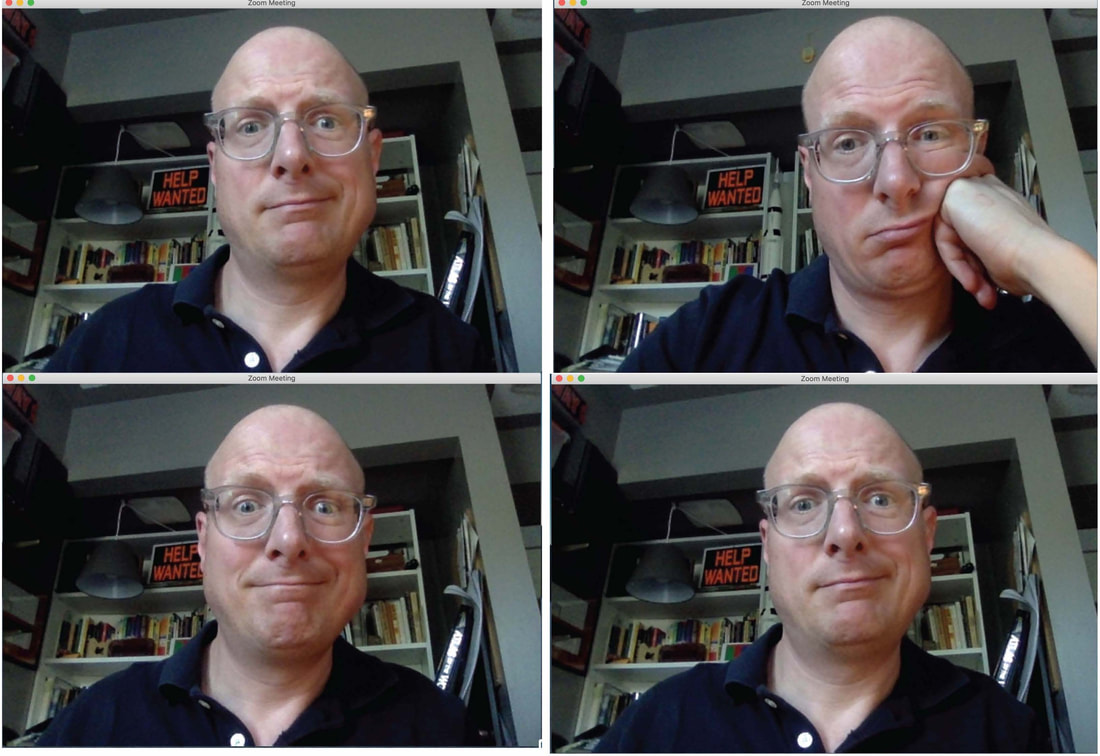 It’s been said of this COVID-19 pandemic that “We’re in this Together”, and while we do indeed see other people in our countless video calls and webinars, many of these past 100 days have been lonely ones. And from what I can tell, speaking for myself and what I hear from my friends and collogues on the other side of the Internet, whatever novelty WFH (work from home) was at the beginning has now certainly worn off. I, for one, thought I had it made when stay-the-hell-home orders were given by health authorities in mid-March because my home is already my “corporate HQ.” I have a dedicated and very comfortable space to run my consulting practice with all the trappings fit for a Staples catalogue photo shoot; I have all the paperclips, reams of paper, and extra toner to get me through this and the next pandemic. I know how to budget my time and if anything, consider myself to be somewhat over-disciplined, freakishly immune to the temptation of the couch, Netflix and the refrigerator. But I’ve had a hard time of it still. The compulsory question “How are ya doin’?” and the requisite “As good as I can be” in response have been replaced on both sides of the screen with a flat, emphatic “I’ve just about had enough of this.” It’s not just the isolation that’s getting to people; we are emotionally and physically exhausted. People, especially those working at large private and public sector corporations, are finding themselves over-worked, over-scheduled and at times virtually micro-managed. I see it every day, logging in and out of meeting after meeting, webinar after webinar. Much like in “normal times” we’re in a mad rush and stressed about making the next meeting; instead of being stuck in traffic or waiting for the next train to come, it’s losing and then finding just-in-time the meeting link or having to once again re-set the camera and mic permissions (which, naturally, differ from platform to platform). And then, following what feels like a half-hour of “Can you hear me now?” and “No, wait, I can see you but I can’t hear you!,” our to-do list has grown and we realize that in 15 minutes we have yet another meeting. And so it goes. Only occasionally in pre-COVID times have I had evening or weekend meetings, but now I can count on them. Has the disconnection (physically, that is) from the outside world caused the weekdays and weekends to merge? I used to wish people a “Happy Friday!” in my day-five emails but have since added a sardonic “(not that it matters)” after it. Is every day Monday? I don’t like Mondays at the best of times. And what’s with all the meetings being scheduled over lunch? Many market and performance gurus predict that COVID-19 will also lay waste to the conventional office; WFH arrangements, and likely the increasingly unrealistic expectations that go with them, will be the “new normal” post-pandemic. I certainly agree that many conventional office arrangements (those damn cubicles!), including the contrived 8:30 am to 4:30 pm window common for many large organizations, should be re-thought; the inflexibility of the government workplace, and reoccupation with “busy work” instead of outcomes, was for me a key motivator to venture out into consulting 8 years ago. But do away with the office altogether? Instead of rushing to declare the office dead, let’s look first to change office culture and work culture in general. For WFH to have a lasting and positive impact on the working and personal lives of employees, organizations (government especially) should first change by:
3 Comments
Mike Sullivan
6/16/2020 11:58:48 pm
So true! The new norm, or next chapter as our post-Covid world has been referred to, was forced upon us in March. Replacing our daily office commute to that cubicle was the "over-managed video conference" to ensure we were staying productive approach. As a fellow independent contractor, we differ in the level of self-discipline, but little else. I fully agree that we niw suffer from emotional and physical exhaustion, brought on by the constantly changing rules and the energy needed to adapt to them.
Reply
6/18/2020 04:45:09 pm
Downtown centric work (Toronto and other large cities) will likely continue to be seriously disrupted until employees and employers feel safe, namely a vaccine is in place and widely used. The use of mass transit, elevators (multiple entries and exits during the day), the underground city of eateries and services, gathering in large groups for education, conferences and so on, currently feel very out of place in almost any sector. The notion of hoteling (procuring a desk in your organization, some 1m from the next employee) and extensive collaboration in close quarters are simply 'not' on the table, likely into mid 2021 at least .. within a year would work habits actually have permanent change attached to them, I think we would revert to past behaviours once we feel safe. Thanks for your reflections Sean.
Reply
Leave a Reply. |
Archives
October 2020
Categories |
|
© COPYRIGHT 2020. ALL RIGHTS RESERVED.
|

 RSS Feed
RSS Feed
